#shorebird
Text
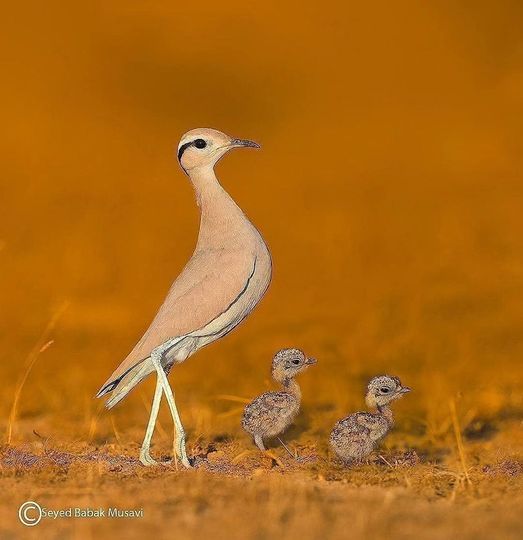
Cream-colored Courser (Cursorius cursor), parent with chicks, fdamily Glareolidae, order Charadriiformes, found in North Africa and the Middle East
photograph by Seyed Babak Musavi
#courser#shorebird#cursorius#glareolidae#charadriiformes#bird#ornithology#middle east#africa#animals#nature
6K notes
·
View notes
Text
Marbled Godwit (Limosa fedoa)
171 notes
·
View notes
Text
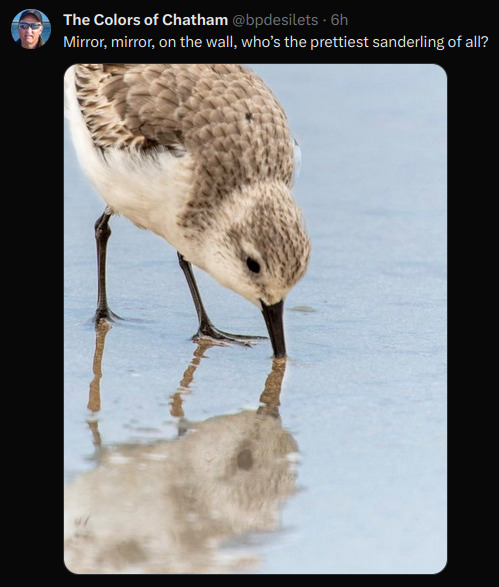
214 notes
·
View notes
Text

Lesser Yellowlegs
87 notes
·
View notes
Text

American Woodcock keeping warm with bill tucked in feathers. Brooklyn Bridge Park, Pier 1
#birds#birding#urban birding#nuts_about_birds#birdstagram#patch birding#nature blogger#nyc nature#brooklyn#brooklyn bridge park#nyc#nature#woodcock#american woodcock#shorebird
127 notes
·
View notes
Text
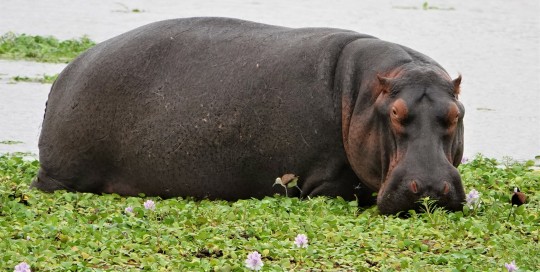
Common hippopotamus Hippopotamus amphibius
With African jacana Actophilornis africanus
Observed by glennstockil, CC BY-NC
#Hippopotamus amphibius#common hippopotamus#Hippopotamidae#hippo#non-ungulate#bird#shorebird#Actophilornis africanus#African jacana#Africa#Zimbabwe
130 notes
·
View notes
Text

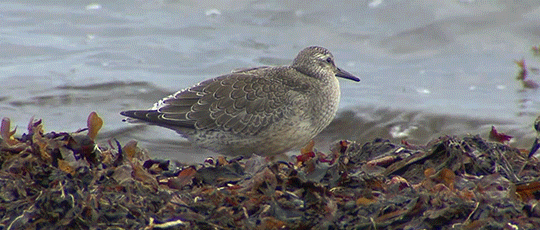

The rufa red knot is a medium sized shorebird, and one of the longest-distance migrants in the animal kingdom. Red knots undergo various physiological changes before their migration and arrive at their regular stopover sites extremely thin. Their gizzard is shrunken for travel so rather than standard hard foods like plant matter or arthropods their preferred food is soft, nutritious horseshoe crab eggs. This interrelatedness means that the success of the red knot population is dependent on the success of the horseshoe crab population.
©ArosFilm
#rufa red knot#shorebird#sandpiper#birdblr#coast#sweden#aves#charadriiformes#request#is the last sentence overkill? idk i want it to be really clear#it's so important to protect EVERY species if we want to protect any of them at all
122 notes
·
View notes
Text

CREEP CREEP CREEP CREEP
Eastern Black Rail (Laterallus jamaicensis jamaicensis)
Southeastern USA and Colorado, Kansas
Status: subspecies threatened in USA
Threats: habitat fragmentation and alteration
----
Hi I'm back have a bird.
51 notes
·
View notes
Text
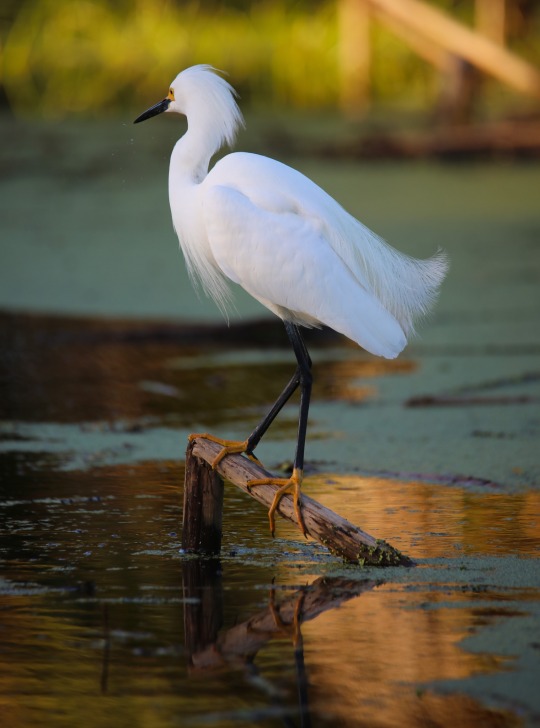
Fishing
Grant-Valkaria, FL - May 23
#photography#nature#wildlife#animal#shorebird#snowy egret#marsh#coastal#shoreline#reflection#portrait#feathers#florida
166 notes
·
View notes
Text

Seeing spots. Spotted Sandpiper at Tommy Thompson Park
106 notes
·
View notes
Text

African Jacana (Actophilornis africanus), family Jacanidae, order Charadriiformes, Kigali, Rwanda
photograph by Will Wilson
Facebook
603 notes
·
View notes
Text
Eurasian Oystercatcher (Haematopus ostralegus)
48 notes
·
View notes
Text

Some piping plovers (Charadrius melodus) and American searocket (Cakile edentula), a native annual that provides the birds with shade, protection from the wind, and attracts a smorgasbord of insects for them to eat.
26 notes
·
View notes
Text
We have talked a little bit about how the pupils of some birds can serve as field marks in the wild and you might be surprised to learn that oystercatchers are in this group as well! Take a look at this American Oystercatcher that I spotted in the Galapagos and see if you can tell what looks odd about the eye
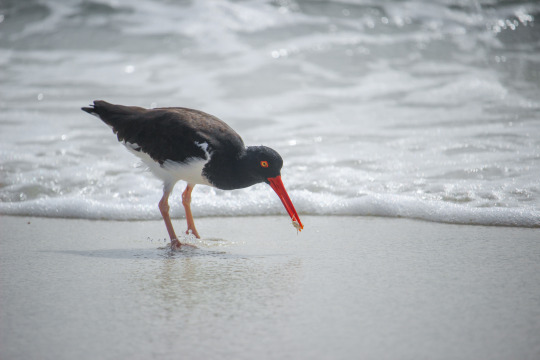
It’s a weird shape, right? What you’re seeing in this bird’s eye is actually an iridial depigmentation that ornithologists commonly call an “eye fleck”. Here’s a closer look:
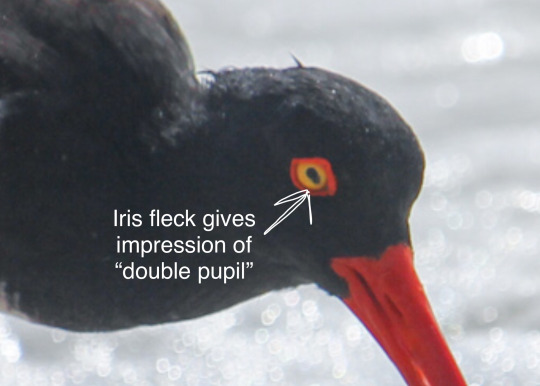
We don’t really know why, but recent studies suggest that the presence of this eye fleck is a really good field mark for identifying sex in American oystercatchers, as only females tend to have the feature. Based on this finding, the bird I spotted is female! Though the study I’m referencing was conducted on American oystercatchers in Texas, the researchers found 97% agreement with the sex identification using eye flecks and genetic testing for sex. The eye fleck method is far less invasive and may be as accurate or even more accurate than physically assessing morphometric measurements of each bird. I really love these shorebirds and I just think this is the coolest identification trick ever.
#Source: TESTING FIELD SEXING TECHNIQUES FOR AMERICAN OYSTERCATCHERS by Munters et al in Texas Ornithological Society#GalapagosFauna#Galapagos Week 2022#birds#birblr#american oystercatcher#shorebird#animals#birding#biology#wildlife#zoology#nature#cool#science#scicomm#birds in the wild
649 notes
·
View notes
Text
Semipalmated sandpipers

50 notes
·
View notes
Text
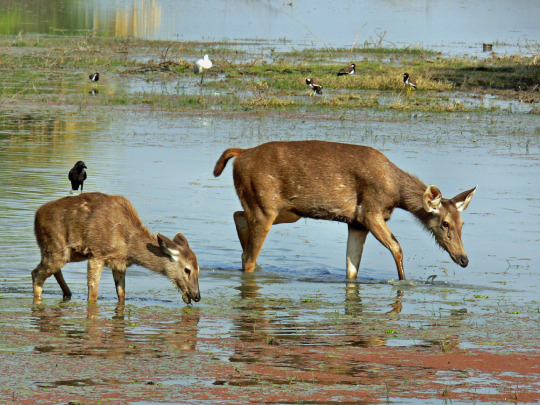
Indian sambar Rusa unicolor unicolor
With house crow Corvus splendens (on young sambar), red-wattled lapwing Vanellus indicus (left and right background), and black-headed ibis Threskiornis melanocephalus (center background)
Observed by reginchen, CC BY-NC
#Rusa unicolor unicolor#Indian sambar#Cervidae#deer#non-ungulate#bird#Corvus splendens#house crow#passerine#Vanellus indicus#red-faced lapwing#shorebird#Threskiornis melanocephalus#black-headed ibis#pelecaniform#Asia#India#Rajasthan#juvenile
49 notes
·
View notes

